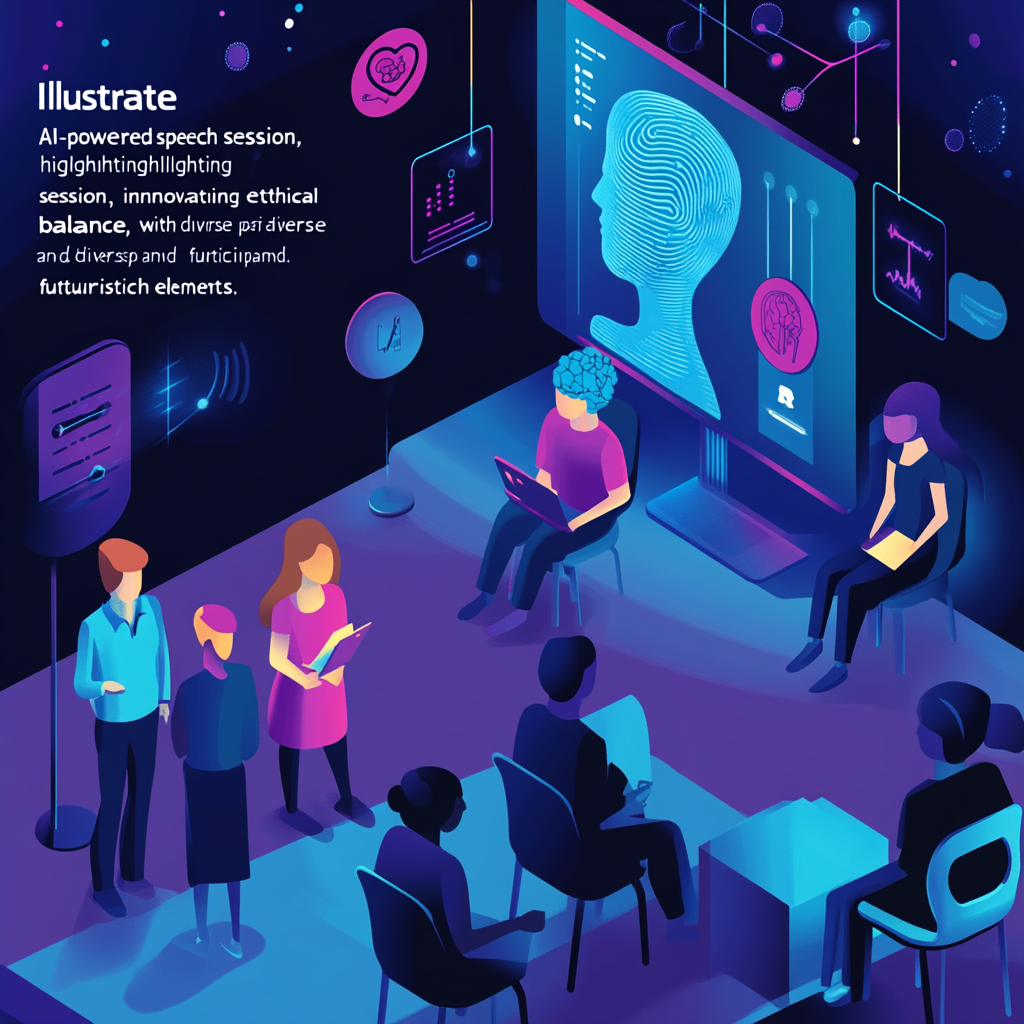
“Balancing Innovation and Ethics: Navigating AI’s Role in Speech Therapy”
Innovation or Exploitation: The Ethical Challenges of AI in Speech Therapy
When you think about speech therapy, what springs to mind? A wise and patient therapist coaxing words out of a shy child, or perhaps an adult struggling to reclaim their voice after a life-altering event? Now, imagine adding Artificial Intelligence (AI) into that mix. Intrigued? You should be. But hold onto your hats, because this ride into the world of AI in speech therapy is filled with promise, perplexity, and more than a sprinkle of ethical dilemmas. Is it innovation or exploitation? Let’s dive into the bubbling cauldron of AI's recent forays in speech pathology and stir up some conversation.
The Untapped Potential of AI in Speech Therapy
Picture this: an AI system analyzing speech patterns with the precision of a watchmaker, granting therapists the ability to fine-tune treatments to an individual’s needs. Revolutionary, right? Gone are the days of one-size-fits-all therapies. AI is here, strutting its stuff with features like real-time feedback that can lead to clearer speech for those battling conditions like Parkinson's disease. It’s not just a fancy gadget; it’s a lifeline for many.
-
Tailor-Made Treatment Plans: Say adios to cookie-cutter approaches. With AI, speech-language pathologists (SLPs) can concoct personalized treatment journeys that cater to each patient's quirks and needs. This is therapy that dances to the tune of individuality.
-
Data Analysis to the Rescue: Who doesn’t love a good data crunch? AI doesn’t just hand over data; it transforms it into a treasure map of therapy success. By refining treatment plans based on ongoing data collection, AI ensures that therapy is as effective (and engaging!) as possible.
-
Assistive Technologies on Steroids: Picture an app that doesn’t just spit out words but words that sound almost human. AI can generate text-to-speech tech that feels like conversing with a friend, crucial for those who struggle to express themselves verbally.
A Sticky Web of Ethical Concerns
Okay, stop right there. Before we dive headfirst into this digital revolution, let’s pump the brakes and consider the ethical implications lurking beneath the surface like an iceberg ready to sink your ship. The truth is, wielding AI in speech therapy is a delicate dance, and we might just step on some toes if we’re not careful.
Privacy and Data Security
First off, let’s talk about the elephant in the room: privacy. AI tools crave data like a kid craves candy. Every word, every hesitation, every stumble – they want it all. But with great data comes great responsibility. It’s a tightrope act to ensure that patient data is treated like gold, not a cookie in a jar. SLPs are tasked with not just protecting data but ensuring it doesn’t fall into the wrong hands or lead to unethical uses.
Algorithmic Bias
Time to get real about bias. If AI is trained on a limited or skewed set of data, it’s like cooking without all the correct ingredients—you end up with a half-baked product. Individuals from diverse backgrounds or those with less common speech disorders could find themselves marginalized. Access to effective therapy shouldn’t be a privilege reserved for a select few, so let’s ensure AI eats its greens in the diversity department.
Corporate Exploitation
Now, let’s play with the big boys—healthcare administrators and insurance companies. There’s a lurking fear that these suits could use AI to squeeze profits at the expense of patient care. The potential for misusing AI, like denying necessary therapy just to save a buck, is a very real concern. This underscores the importance of regulations that keep a watchful eye on the deployment of AI in therapy.
Over-Reliance on Algorithms
We’ve all heard the saying “too much of a good thing.” With AI, the risk is real. An over-reliance on algorithms could dull the brilliance of human intuition, creativity, and empathy that clinicians bring to the table. This field thrives on the nuances of human connection. Let’s not let AI bulldoze the tender, understanding side of therapy that requires a human touch.
Budget Constraints and Resource Allocation
Let’s not forget the real-world struggles of the healthcare system. Cutting-edge technology is often left in the dust due to budget limitations. This means that even when great AI tools are available, they might not see the light of day in therapy rooms, leaving clinicians overwhelmed and patients without the support they need.
Charting a Path for Ethical AI Integration
Innovation should be the wind at our backs, but only if we heed the warnings about exploitation. Here’s how we can pave the way for ethical AI integration in speech therapy that doesn't just function but thrives:
-
Clinicians and Developers Need to Shake Hands: The developers behind AI tools should sit at the table with SLPs. By collaborating, we can create systems that respect the nuances of therapy, ensuring we keep the human touch intact while harnessing the benefits of tech.
-
Establishing Strong Regulations: Policymakers must come forward with robust regulations that prevent the misuse of AI. Transparency and accountability aren’t just buzzwords—they’re essential for safeguarding the future of AI in therapy.
-
Putting Patients First: Whenever we discuss AI, let’s make sure that patient-centered care takes the spotlight. AI should enhance communication, a fundamental human right, rather than being treated like a commodity.
Conclusion
The future of AI in speech therapy is laden with possibilities, yet it dances dangerously close to ethical pitfalls. The key lies in acknowledging these challenges and striving to craft a thoughtful integration of AI that uplifts rather than undermines the practice. After all, communication is more than just exchanging words—it's the very thread that weaves the fabric of our humanity.
So, let’s keep the conversation alive. Are we opening doors to innovation, or are we tipping the scales toward exploitation? You, the stakeholders—SLPs, AI developers, administrators, and policymakers—have the power to ensure technology enhances our very human experience rather than distracts from it.
Want to stay up to date with the latest news on neural networks and automation? Subscribe to our Telegram channel: @ethicadvizor

